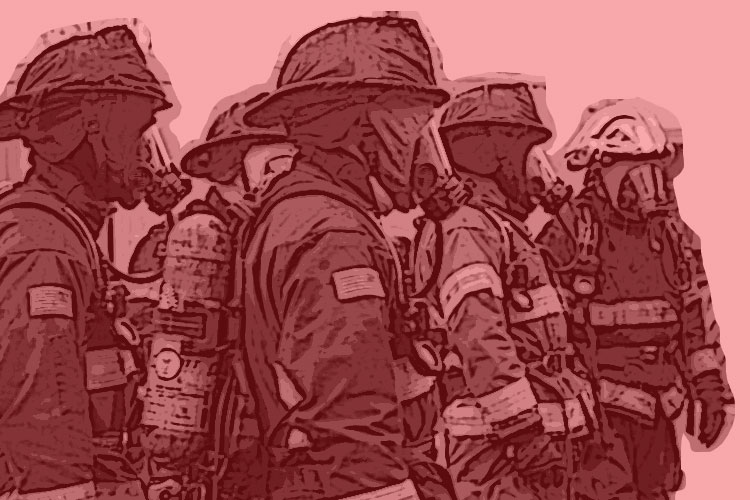
By Todd LeDuc
Forty years ago, Warner Books published the popular book Mega Trends by author John Naisbitt, in which he predicted visionary transformation of business trends. In many ways, the global ecosystem has had top reset during 2020 and likely beyond as COVID19 vaccines are beginning to be deployed as this is written.
This once in a century global pandemic will leave behind profound lessons. I have been blessed to serve on the board and executive board for the International Association of Fire Chief’s Safety, Health & Survival Section, a peer reviewer for the Center for Public Safety Excellence, and now Chief Strategy Officer for Life Scan Wellness Centers, the nation’s largest provider of public safety physicals. These positions have allowed me the privilege of interacting with fire service colleagues and leaders from across the country on issues of relevance to the fire service. This has allowed me a unique opportunity and perspective to listen and learn as well as identify emerging trends likely to continue to drive or emerge as industry and service shaping trends.
With a doubt, technology will continue to drive the evolution of how we operate and provide services. In 2014 I wrote and published an article predicting the proliferation of robots in fire operations—not to replace firefighters but to manage high-risk operations more safely. In 2020, the City of Los Angeles (CA) Fire Department debuted its firefighting robot to a building fire in their downtown district. Likely, enhancements and growth in this area will continue, along with the use of more drone technology both for situational awareness but emergency response and extinguishment operations. Additionally, technology enhancements to on-scene tracking and the application of artificial intelligence (AI) technology will aid in preplanning and command strategic decision-making during emergency responses. Expanded technology applications regarding biometric monitoring will be focused on firefighter health, wellness and safety. Biometrics addressing carcinogenic exposure levels, cardiovascular and heat stress, and physiological status will continue to grow and aid in firefighter survival.
The focus on firefighter health and wellness will expand. This was occurring before the pandemic but will certainly be accelerated as the crisis impacts first responder health. In fact, given the suggested potential longer term health consequences of exposure, with numerous first responders having contracted and some dying from COVID-19, I have previously written on the need for a long-term medical surveillance program for first responders. Anecdotally, I have observed a growing focus on health and wellness, whether that be more departments looking to provide annual medical physicals for their members, the establishment of multiple collaboratives focusing on sharing best practices surrounding firefighter health, or an unprecedented number of candidates (17) running for election to fill three board seats to the IAFC SHS Section board. Our research community continues to shed light on additional knowledge of fire service occupational health risk. I anticipate greater strides on enhanced early detection to be embraced not only by early adopters but to become widespread. The Better Heart project, led by Dr. Denise Smith from Skidmore College, has recommended enhanced cardiac imaging for the detection of cardiac risk be incorporated into firefighter physical exams. Taking a cue from the term community risk reduction (CRR), the terminology “health risk reduction” will focus on identifying and managing your health risk actively and proactively continuing to improve firefighter survival. Artificial intelligence will also likely guide algorithms that identify risks and assist in managing them proactively.
There will be an enhanced emphasis on CRR, as well. Elected officials’ continued calls for accountability of results and outcomes will elevate the prioritization of reducing community risk both from fire as well as health concerns. There will be enhanced efforts to adopt stronger codes, a focus on educating the community when it comes to managing their risk, and the elevation of the discussion of preventative measures as well as larger discussion on the need for residential sprinkler systems. On the health front of the community, managing the access to community 911 resources will continue to shift more resources to managing chronic care, aligning community resources with need and expanding what has been referred to as “community paramedicine.”
There will also be a greater emphasis on developing future leaders in the work force. The pandemic has only reinforced how complex the already “all-hazard” fire service is. This complexity is likely to increase. Tomorrow’s leaders will require expand skill sets and depth to addresses evolving issues, including diversity and inclusiveness, harnessing technology and information systems, managing generational differences, and aligning services with system performance.
Organizations that are strategic about future needs and transformation will lead as “early adopters” and share their experiences with the service at large. No matter what the future holds, the fire service will adapt and overcome, as it has for centuries.
MORE TODD LeDUC
A Heckuva Year: A Look Back at 2020 and Firefighter Health
Thy Cup Overflows—or Does It? Firefighters and Hydration
Firefighter Health: Enhanced Screenings Save Lives!

Todd J. LeDuc, MS, CFO, FIFirE, retired after nearly 30 years as assistant fire chief of Broward County, Florida, an internationally accredited career metro department. He served as chief strategy officer for Life Scan Wellness Centers, a national provider of comprehensive physicals and early detection exams. He has served as a member of the International Association of Fire Chief’s Safety, Health & Survival Section for over a decade and is currently secretary of the section. He is a peer reviewer for both professional credentialing and agency accreditation. He is editor of Surviving the Fire Service (Fire Engineering Books) and serves on numerous advisory boards and publications. He can be contacted at Todd. LeDuc@lifescanwellness.com

